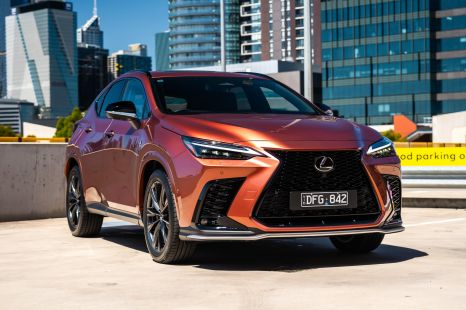

Max Davies
2025 Lexus NX450h+ F Sport review
28 Days Ago
I bought a Tesla Model Y. What was the buying experience like and what issues have I had? Let me explain how it went!
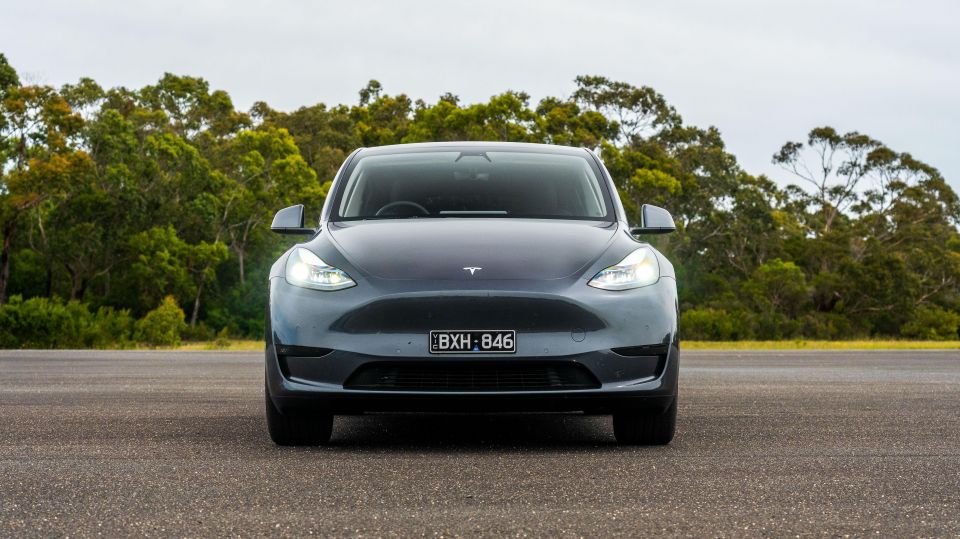


Quickly see how this car stacks up against its competition. Select any benchmark to see more details.
Where expert car reviews meet expert car buying – CarExpert gives you trusted advice, personalised service and real savings on your next new car.
So between the time we bought our last Tesla, a Model 3 Performance, and two years down the track we managed to have a baby girl.

I always said that I never wanted to own an SUV simply for the sake of owning an SUV. But, a child…and heaven forbid, children, really changes your perspective on car ownership.
Not only does a child make a mess of your precious belongings, they bring with them mountains of things that are totally unavoidable. Think prams, change bags, portable cots, toys… you name it, it needs to be packed even for a quick trip down the road.
We realised the Model 3 was too small for family duties and most importantly, was too low to the ground for loading a baby into and out of a child seat.
So last year, just prior to the Model Y going on sale, we sold our Model 3 and placed an order for a 2023 Tesla Model Y.
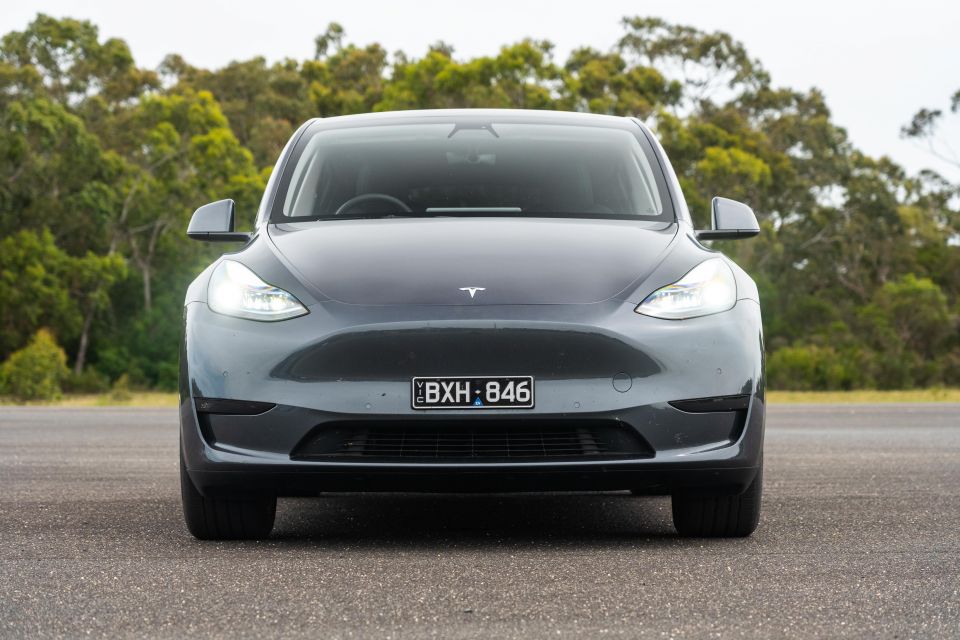
Ideally I wanted to get a Model Y Long Range, but in Australia Tesla currently only sells the Model Y rear-wheel drive and the Model Y Performance.
After my initial review of the Model Y (which was on 20-inch alloy wheels), I was shocked at how bad the ride was compared to its price competitors in the segment, so we avoided the Model Y Performance (which sits on 21-inch wheels) and even firmer suspension, and went with the base model instead on 19-inch wheels.
Just like the last time we bought a Tesla, the fixed price purchasing process appealed to me. There’s no haggling, no concern that somebody else got a better deal and no ambiguity on pricing (well, aside from it constantly changing).

One thing worth noting if you’re planning on placing an order is that the $350 reservation fee is no longer refundable.
When we ordered our Model 3 Performance the reservation fee was fully refundable up until a VIN was allocated, now you’ll lose that $350 if you don’t go through with the order.
We did contemplate buying the Model Y Performance and just changing the suspension so it wasn’t as bad – but ultimately it’s not my job to fix poor engineering.
I didn’t want to void the warranty and the rationale was that we’d simply switch to a Long Range if and when they are released and drive this one around in the interim.
| 2022 Tesla Model Y rear-wheel drive | |
|---|---|
| Base price | $65,568.18 |
| Options | Midnight silver metallic ($1500) |
| Additional fees | Delivery fee ($1375.00), registration ($243), CTP ($539), plate fee ($190) |
| Stamp duty | $3032.40 |
| GST | $6556.82 |
| Total (on-road) | $76,129 |
You collect the car from a warehouse. No, I’m not kidding.
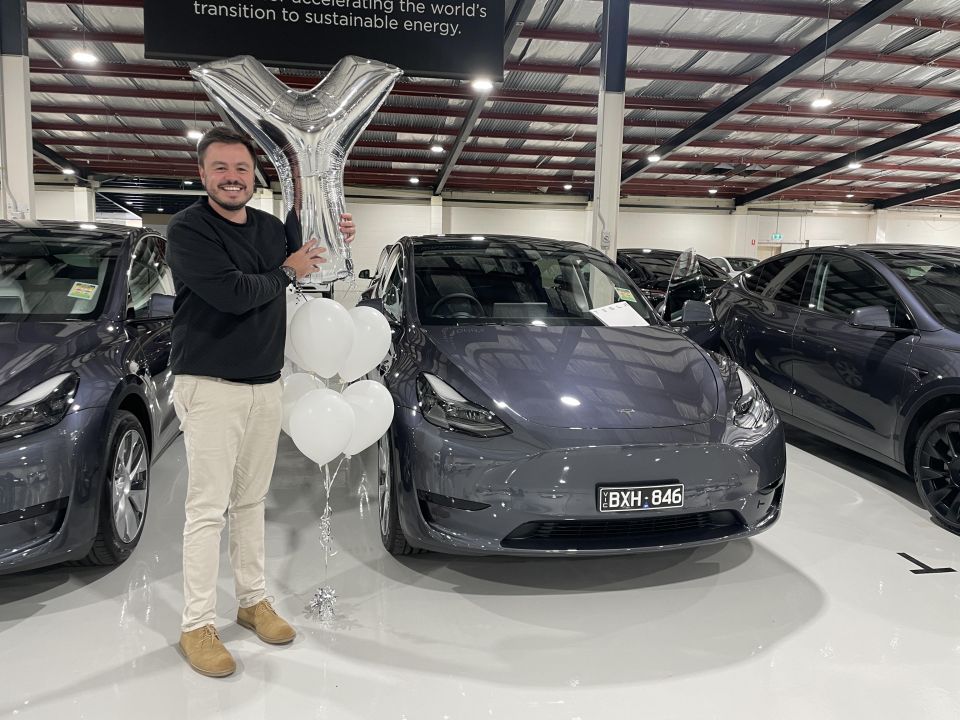
The last time we bought a Tesla it was delivered in the brand’s showroom in Melbourne. It was a nice experience and while it was devoid of the glitz and glamour you’d get with most other car brands, it did the job.
This time around though, I literally turned up to a warehouse and my car was inside the warehouse with a hundred other Model 3 and Model Y vehicles. I mean, it was one of the nicer warehouses I’ve seen, but don’t go into this expecting it to be a glamorous experience.
It’s super low rent and designed for you to get there, sign an iPad and leave in record time so they can bring the next car in to deliver to another customer.
No issue for me because my wife doesn’t really care about cars and was happy for me to visit the warehouse in my lunch break and collect our car.
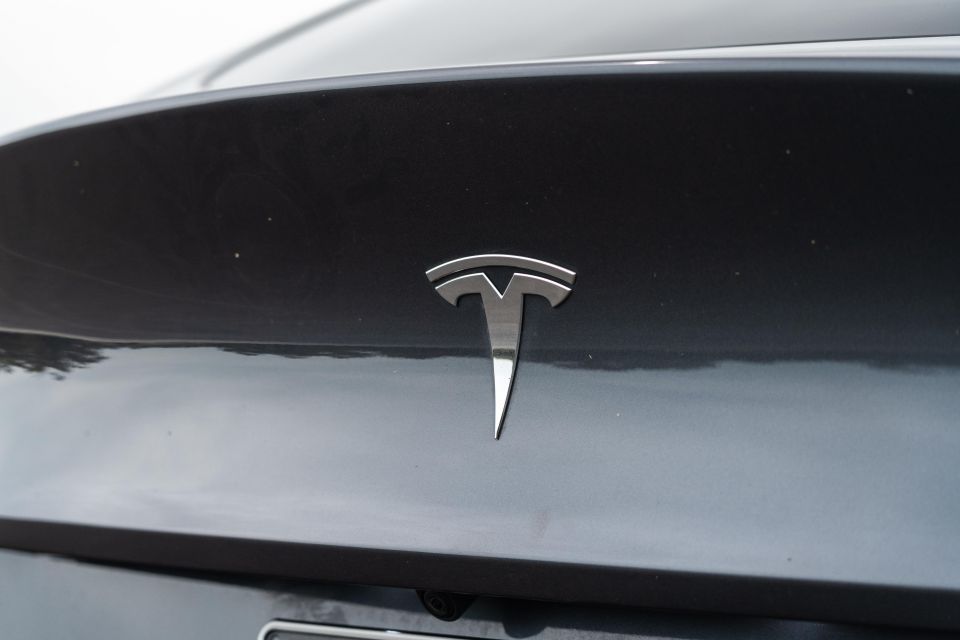
I’d recommend thoroughly inspecting the vehicle before you leave. Because they are parked so close to each other in relatively poor lighting conditions, you want to make sure there is no pre-existing damage on the vehicle.
The staff churn through them so quickly that it would be easy for the pre-delivery staff to miss things. Ours was thankfully all good with no issues to speak of, so I got out of there as quickly as I could.
One thing worth noting is that when we ordered our car, we got our order in just prior to the price increasing by $3000 (it has since come down to around the same price we bought our car for). We were also one of the last orders to receive a mobile charger – if you order one today not only will you pay more for the car, but you’ll also have to fork out around $500 to receive a mobile charger.
Tesla also no longer provides carpet in the front boot or a wall charger for home (both things that came in our last Model 3).
One thing you’ll learn quickly is that the Tesla Model Y and Model 3 are the new Toyota Camry. It feels like everybody has one.
When you see other Model Ys on the road (personal subjective opinion…) you realise how strange the car looks. The design looks odd and the proportions are off. But the flip side is the odd design offers storage and space, functionality needed in a car like this.
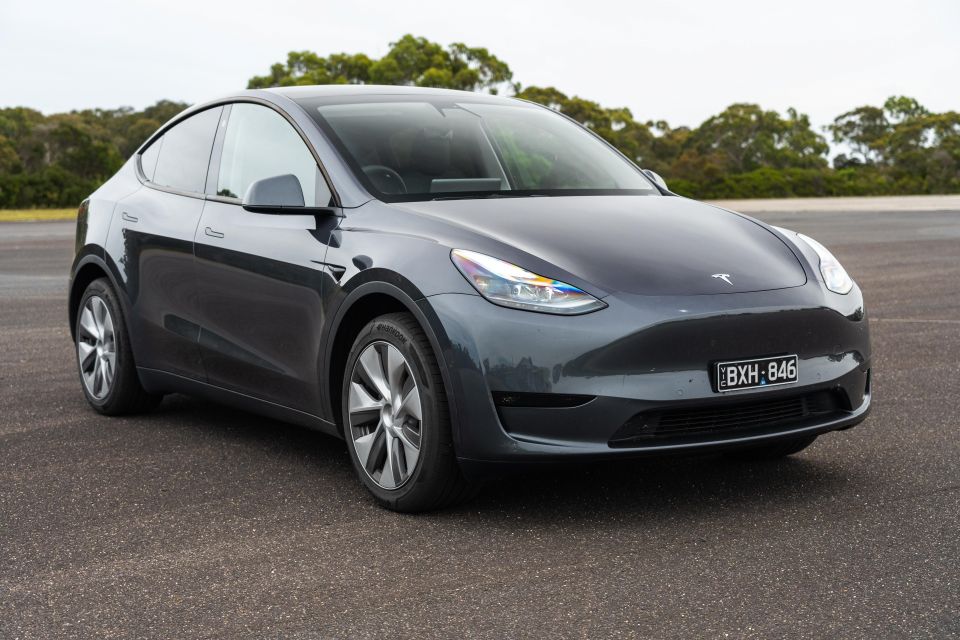
You’ll become used to seeing them everywhere in built up cities and the special part of owning something unique doesn’t really exist.
Something else that’s increasingly more common is animosity toward Tesla owners. There are plenty of videos online of people vandalising Teslas and abusing their drivers simply because it’s a Tesla.
Thankfully they all come standard with a USB stick that records from four cameras on the car as part of Sentry mode. It’ll record any motion around the vehicle when it’s stationary and will also record as a dash camera while the car is driving. Just keep in mind Sentry mode when the car is stationary is a massive battery drain – so expect to lose a stack of range overnight if you use the feature.
My last car had incredibly witty and nerdy registration plates – PEVI, which is Ohm’s law equation for a DC circuit (P = V * I).
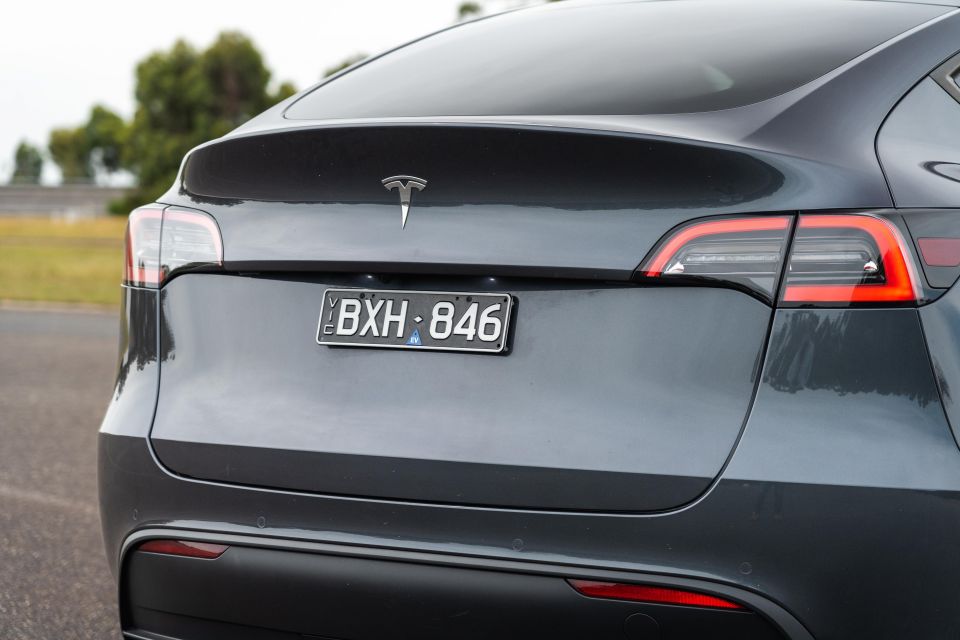
My wife got sick of explaining what the plates meant and got sick of people constantly taking pictures of the car and tagging me on social media, so we went with discreet slimline black registration plates this time around.
The other thing you grow to hate very quickly is (some) other Tesla owners. I had to leave the Tesla owner’s group on Facebook because of the unhinged minority that have never owned another new car and think that everything in their Tesla is some groundbreaking technology that has never existed prior to Tesla speaking about it. They are also all convinced that any negative media on a Tesla (regardless of whether it’s justified) is ‘big media’ out to get Tesla.
Most owners are fine… but please don’t wave at me. I probably won’t wave back, just in case you’re a weirdo.
Given we opted for the 19-inch alloy wheels (instead of the 20-inch wheels fitted to our press test vehicle), I was hoping the ride would be significantly better.
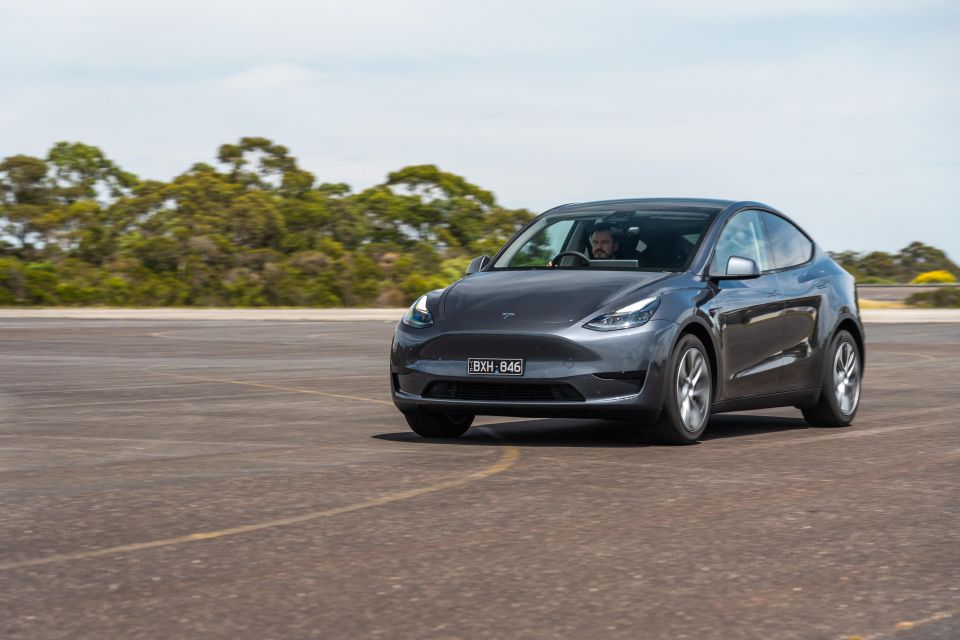
Unfortunately the ride is still incredibly firm and way too firm for an entry-level SUV in this application. It crashes over bumps and if you hit a pothole on the move you’ll feel it tear through the entire car.
It doesn’t help that our vehicle was delivered with 46psi pressure in the tyres. I dropped that down to 42psi (which is the recommended pressure on the service menu). Some owners have gone even lower than that, but I’m not comfortable taking the vehicle outside of the parameters it was engineered for.
At 42psi the ride is still very firm, but it’s significantly better than at 46psi and better again than the 20-inch setup in the first car I drove. I’m very glad we didn’t go with the Performance which would be even firmer again with sports suspension and bigger 21-inch alloy wheels.
Coming from the Model 3 Performance, the base Model Y is positively slow in comparison. It takes just under 7.0 seconds to get to 100km/h with just the driver on board. Load it up with passengers and it feels slower still.
Our first drive of the Model Y was during torrential rain and when we filmed our video review I praised it for its handling.
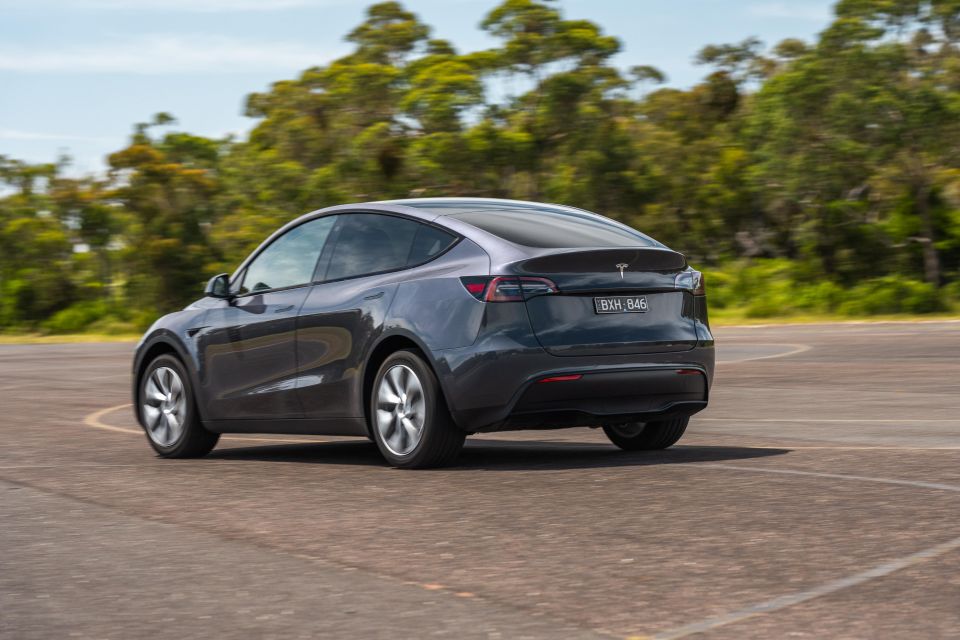
Fast forward to today; taking into account the swap to 19-inch alloy wheels instead of the 20-inch, the tyre change from a Michelin Pilot Sport EV tyre to a Hankook, plus a dry road; and it’s disappointing how sloppy the Model Y’s handling really is.
So, why is it so sloppy and how did we miss it to start with? A lot of it comes down to the ride and handling setup and the use of a single motor on the rear axle. We unearthed this during a spirited drive at the proving ground we test all our vehicles at Lang Lang.
The ride firmness is dialled in to limit body roll, which is a good thing for handling, but with such a direct steering rack when turn in the front end bites and causes the inner rear wheel to unload. Couple in regen and a lack of traction on the unloaded wheel and you start getting issues with traction and stability control constantly overreacting.
Hit a bump mid-corner and the Model Y will panic brake the stability control in an attempt to bring the car back into line even though it’s not out of control.
The further issue with the rear-mounted motor is that under heavy braking where a bump is exhibited the car will briefly cease regen braking and switch only to mechanical braking. This wildly affects the vehicle’s ability to slow down because the driver immediately needs more braking input to compensate for the deceleration achieved with the regen braking that is no longer happening.

In short, the Model Y is way sloppier when driven hard than I first noticed in the wet. In comparison to something like the BMW iX3, the iX3 is far better composed and offers a wider breadth of ability between Comfort and Sport modes. BMW has also dialled in the right stability control aggressiveness to manage a rear-axle single motor arrangement.
This should all change with the Model Y Long Range or Model Y Performance, which both feature two electric motors to better manage torque delivery.
It’s also worth noting that most people will never do this type of driving to unearth the vehicle’s dynamic flaws, but we test all cars at Lang Lang over the same course at the same speeds and this is by far one of the most disappointing we’ve tested here in terms of dynamic performance, because you’re never sure exactly what it’s going to do or how the stability control is going to react.
Putting handling to one side, one of the big bonuses of the base Model Y is the use of an LFP battery. This type of battery chemistry allows the vehicle to constantly charge to 100 per cent, as opposed to the 80 or 90 per cent we used to charge to in our lithium-ion Model 3 Performance.
The advantage of this is at 100 per cent charge we have an indicated 430km of driving range. Even though the Model 3 battery was bigger, the fact you wouldn’t charge to 100 per cent meant that you were never really using that larger battery range unless you chose to fully charge it, which is against recommendations and runs the risk of affecting battery life and range.
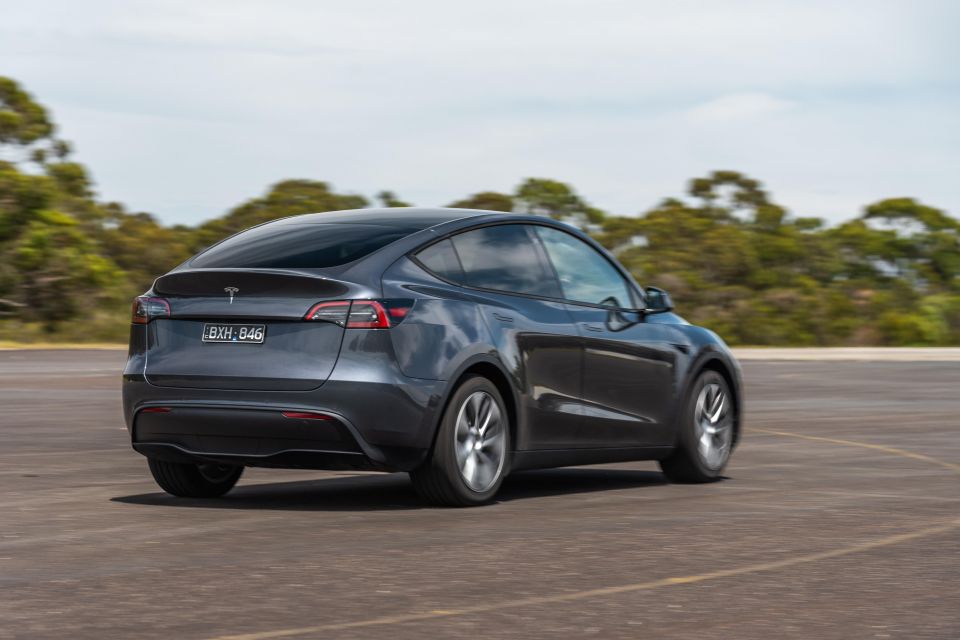
It makes us wonder if we’re even going to need to bother swapping out our vehicle for a Model Y Long Range if it ever launches in Australia. This level of range is adequate for the driving we do.
So far over around 6000km we’re averaging around 14.5kWh/100km, which is pretty impressive for a vehicle this size.
Visibility out the front and sides is great, but vision out of the rear is poor. It’s a pretty narrow envelope to look through. The reverse view and side cameras are great and the distance control from the parking sensors works well.
I’d love to see rear cross-traffic alert, given it’s standard on most new cars today. But Tesla’s insistence to move away from radar means it’s unlikely to be available any time soon.
On the autonomous functions, the distance-based cruise control with lane centring typically works well (Tesla calls it AutoPilot). It’s the best on the market in terms of keeping the car central to its lane.

But Tesla has recently started disabling the radar fitted to the vehicle to only use camera vision as its source for distance control and autonomy. On this front it can be a bit haphazard at times. Around once a fortnight it’ll brake hard at shadows created by overpasses or road signs. I’m always ready for the throttle in case it does to avoid an accident.
Tesla also recently rolled out use of ‘Enhanced AutoPilot’ free of charge for 30 days (it’s normally a $5000+ subscription or over $10,000 if you want the ability for ‘Full Self Driving’). Gotta say, if I spent any money on it, I’d be asking for a refund.
It’s designed to drive you from entry of a freeway to the exit – including change lanes on its own and it’s intended to work its way around other cars. I tested it extensively and found that it was terrible at lane change choices, changed lanes way too violently and left exits far too late.
If this is the basis for Tesla’s ‘Full Self Driving’ future, the company could be in trouble. It doesn’t work and I would never use it with my family in the car. It’s too unpredictable and needs a lot of work to be functionally useful.
The main reason we went from a Model 3 to a Model Y is to take advantage of the interior space and the hip entry point.
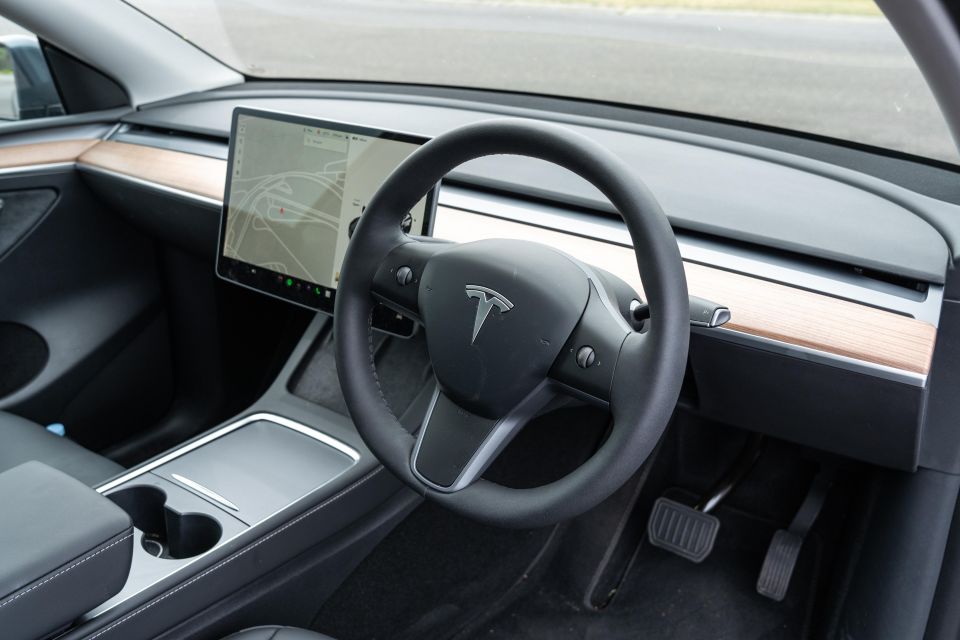
Where expert car reviews meet expert car buying – CarExpert gives you trusted advice, personalised service and real savings on your next new car.
It’s chalk and cheese compared to the Model 3. You enter the cabin at a great height and the storage is excellent. With a pram, portable cot and the litany of other things we carry around it’s so easy to load everything in and have sufficient space left over.
As with the Model 3, there’s just a central screen and steering wheel buttons to use. There are no physical switches or buttons for critical controls outside of that. I still think the Model Y is desperately lacking a head-up display or a driver display.
The speedometer is too small and requires constant eyes off the road if you live in a speed camera riddled state like Victoria.
The infotainment system is also pretty fiddly to use while you’re driving. A lot of the critical functions are small buttons that take your eyes off the road for too long.
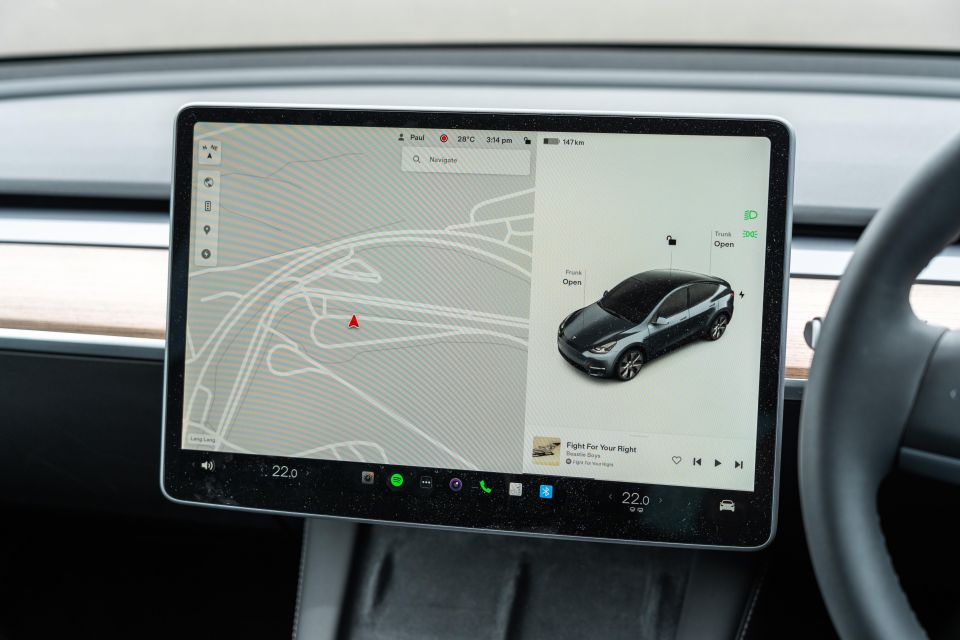
The voice recognition rarely works correctly, so it’s not really a suitable option to replace having to use physical buttons.
A recent update has caused the air conditioning to be totally ineffective at cooling the cabin on a hot summer day. The full glass roof radiates heat into the cabin and even with the auto blower speed set to High, the cabin doesn’t cool anywhere near as well as it should – hopefully that’s something Tesla fixes with a future update.
In terms of build quality, we haven’t really had any issues with ours. Everything is put together well and there are few major panel gaps. The paint quality isn’t amazing, but I also wasn’t expecting it to be on a mass produced high margin vehicle.
One of the things I love the most is the application on the phone. It allows me to control virtually everything in a matter of seconds. With other car brands you need to wait an eternity for anything to happen as you try and ask the car to perform certain functions.
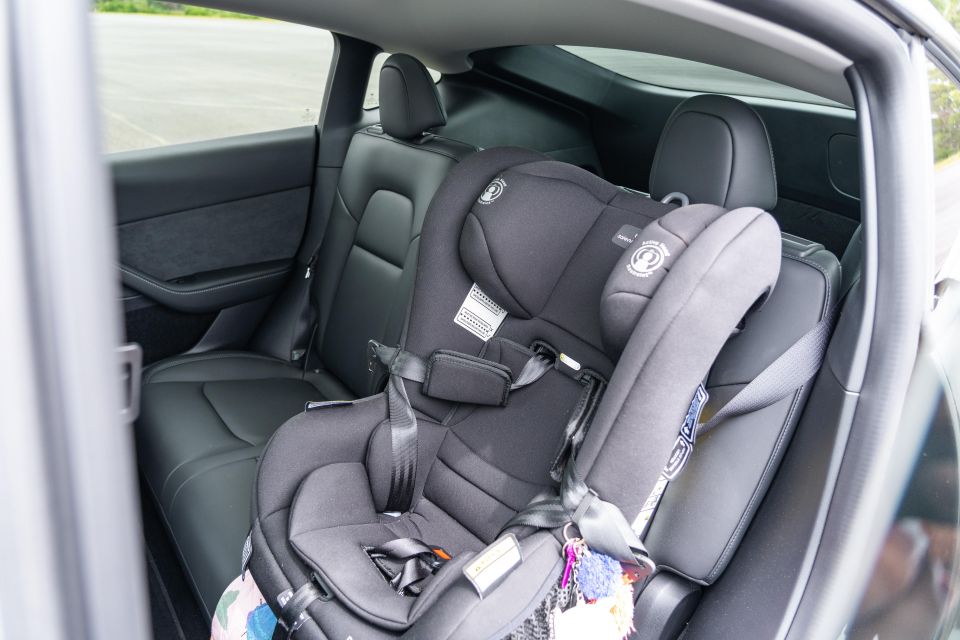

I also love the software updates that regularly roll out new features. While some elements of the car still need work, Tesla is very good at the tech component.
Likewise the charging network – I’ve never been to a Tesla supercharger that isn’t working correctly. I can’t say the same for the ChargeFox network, which often has reliability issues that remain unresolved for months due to supplier supply shortages.
Given it’s the same technology – i.e. putting electricity into a car – it’s hard to understand how they’re so different in comparison.
Most of our charging is done at home, though. We have a charger in our parking bay in our apartment building and it’s billed to us on a monthly basis – if you’d like to know more about this, I’m happy to do an article on it one day.
Sorry if this sounds overly negative – I’m lucky to be able to drive every new car on the market, so I’m not in awe of every feature simply because it’s a new car. We use the vehicle as transport from A to B and for that it works fine.
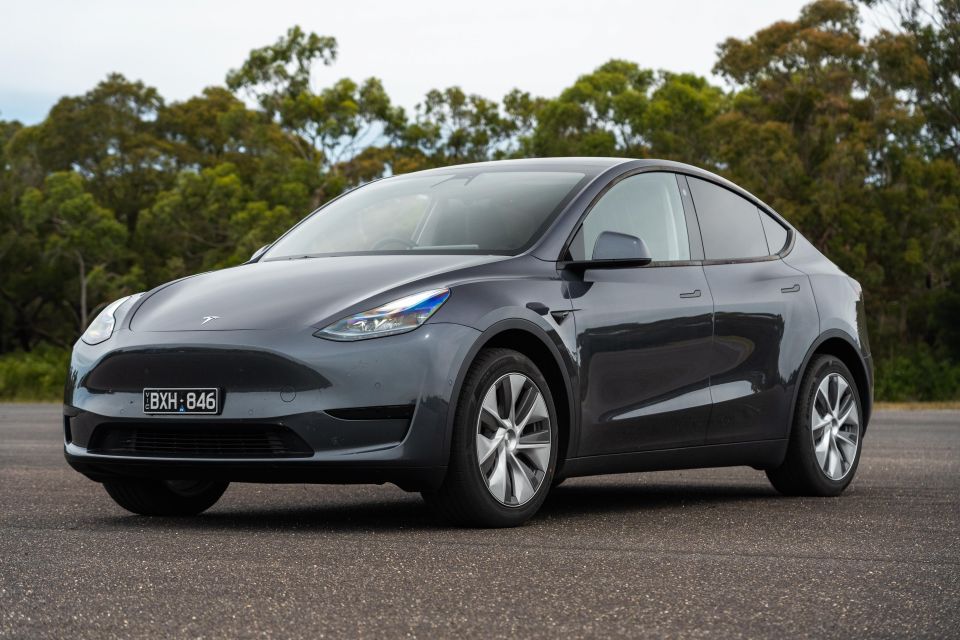
The great parts of the car are great and the not so great parts are… not so great.
I think that Tesla will always remain competitive on the technology front, but the company is now becoming the ‘legacy’ EV brand.
I’m excited to see what other brands conjure in the EV space. Things like the new Polestar 3 look awesome and appear to be catching up on the tech front.
When it comes time to go to our next family vehicle, there’s a good chance it won’t be a Tesla, but you never know.
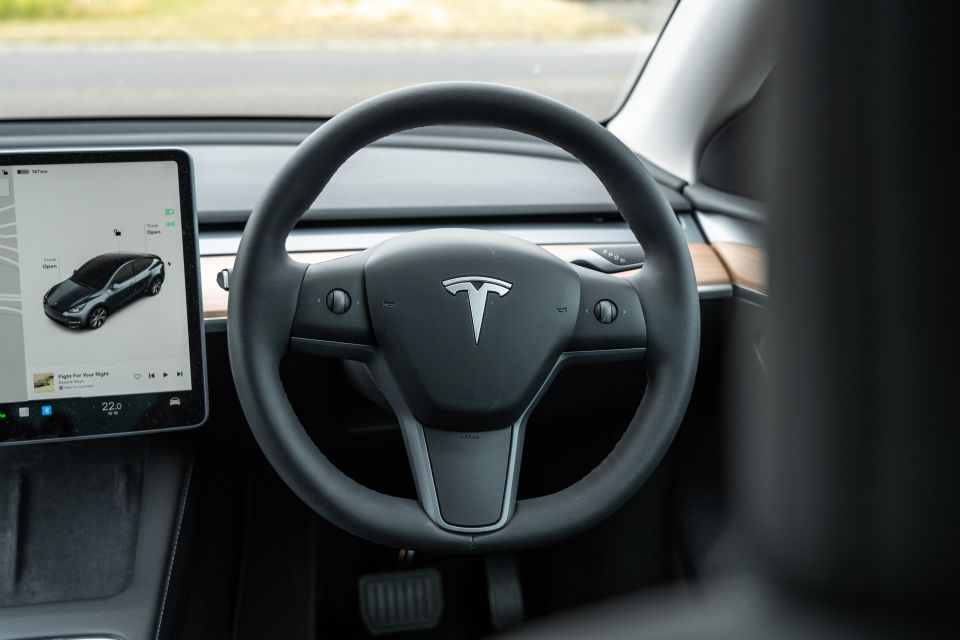
Click the images for the full gallery
MORE: Everything Tesla Model Y
Where expert car reviews meet expert car buying – CarExpert gives you trusted advice, personalised service and real savings on your next new car.
Paul Maric is an Australian car expert based in Melbourne, Australia. Paul is a founder of CarExpert.com.au & formerly part of the CarAdvice founding team.


Max Davies
28 Days Ago
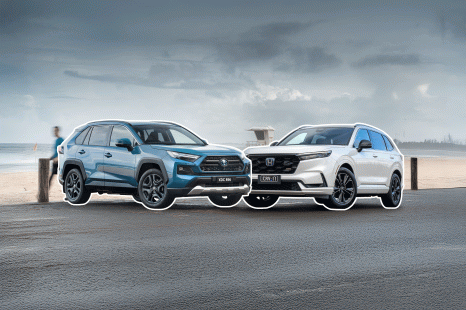

Andrew Maclean
17 Days Ago
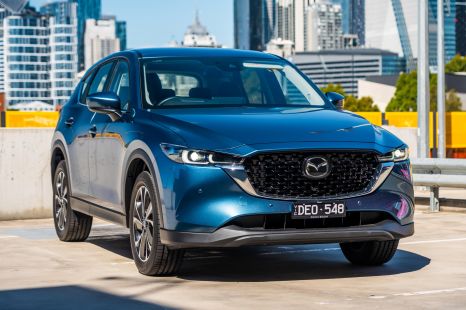

James Wong
13 Days Ago
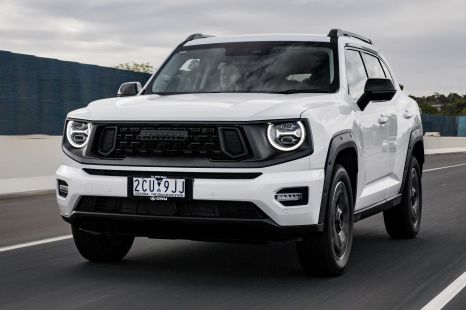

Max Davies
12 Days Ago
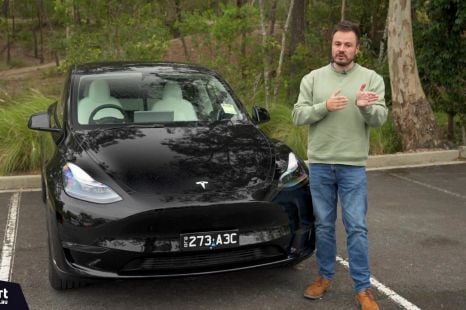

Paul Maric
9 Days Ago
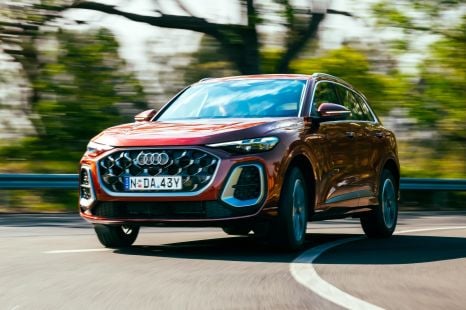

James Wong
6 Days Ago